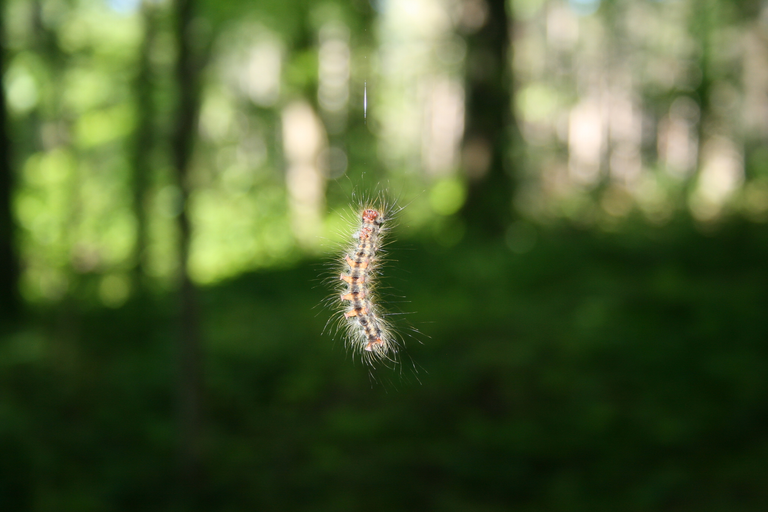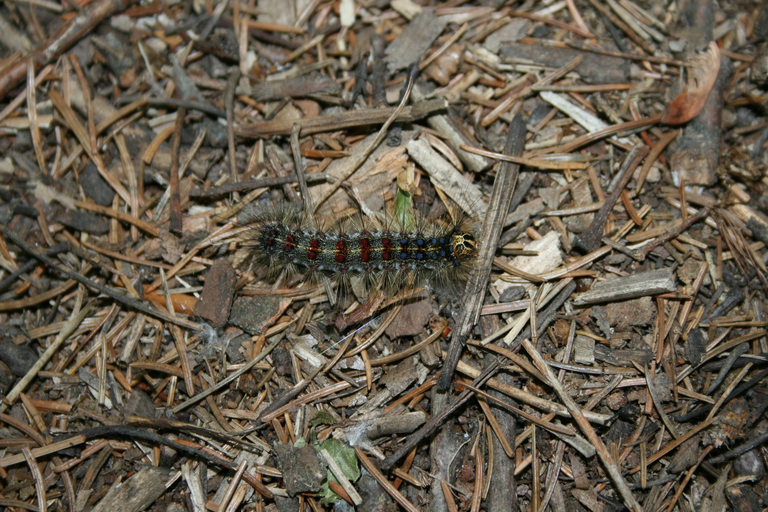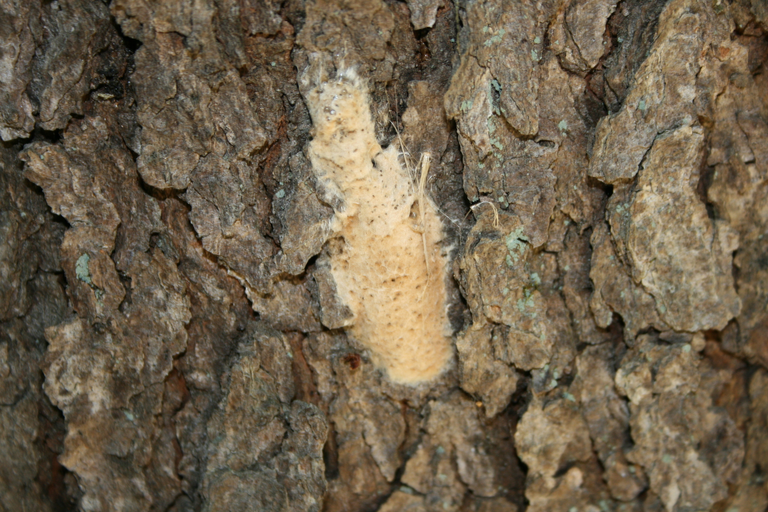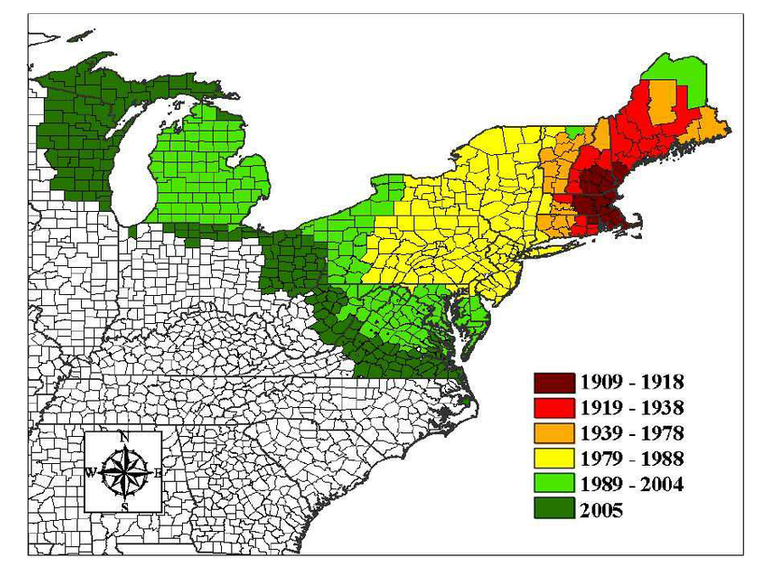Spongy Moth (Lymantria dispar)
| Latin name | Observation date | Location |
|---|---|---|
| Lymantria dispar | June 16, 2021 | Lowell, Michigan, USA |




The spongy moth (Lymantria dispar dispar) is a species of moth introduced to North America in the 1860s and has since become one of the most notorious pest species in the deciduous forests of Northeastern North America. Unfortunately, the species finally made its way as far West as my home state of Michigan, USA during the late 1980s and has since firmly established themselves in the forests across the whole of the state.
Map of United States Gypsy Moth Establishment

Spongy moth larvae are both voracious eaters and quick to spread to new territory. Thanks to their light weight and the fine hairs that line the segments of their bodies, Gypsy Moth caterpillars are capable of being blown into the air and carried by strong winds. To help facilitate this spread, the caterpillars will climb nearby vegetation and then hang from silken threads that they spin until a strong breeze passes by. This airborne dispersion combined with spread caused by the transport of firewood containing spongy moth egg masses allows unchecked populations to travel as much as 13 miles per year. While this may seem like a small distance for any given year, changing climates and a lack of effective means for controlling their spread leave a relatively high likelihood that the species will ultimately spread across virtually all deciduous forest environments in the continental United States within the next 50 years.
Probability Map for Predicted United States Gypsy Moth Establishment

This is a pest species of major concern in North America because the larvae are one of the primary causes of defoliation in the deciduous forests of Northeastern America. While the larvae tend to prefer oak, aspen, and fruit tree species, over 300 tree and shrub species are host to this pest, leading to widespread defoliation following their mass emergence in the spring. The first major outbreak in the United States is dated to 1889 in the greater Boston area, where records reflect an outbreak that left local trees completely defoliated and caterpillars covering virtually all sidewalks and homes across 30 suburban towns. Despite enacting pest control strategies ranging from the application of acid to egg masses, burning infected trees, and the application of insecticide agents, efforts to control the species have been largely ineffective, allowing the pest to then spread progressively further westward.
After the adult spongy moths have successfully mated, the females will lay around 500 eggs in a mass that is then covered by a fuzz-like mat on the trunks of their host trees to protect and insulate the eggs until they hatch the following year. This fuzzy mass can cause a rash similar in appearance to those produced by poison ivy if touched with unexposed skin. Touching live larvae results in a similar rash as well, further adding to the nuisance factor of the species.
| Link to original community |
|---|
| https://www.inaturalist.org/observations/83342720 |
| Latitude | Longitude |
|---|---|
| 42.962797 | -85.374668 |
Thanks for your contribution to the STEMsocial community. Feel free to join us on discord to get to know the rest of us!
Please consider delegating to the @stemsocial account (85% of the curation rewards are returned).
You may also include @stemsocial as a beneficiary of the rewards of this post to get a stronger support.